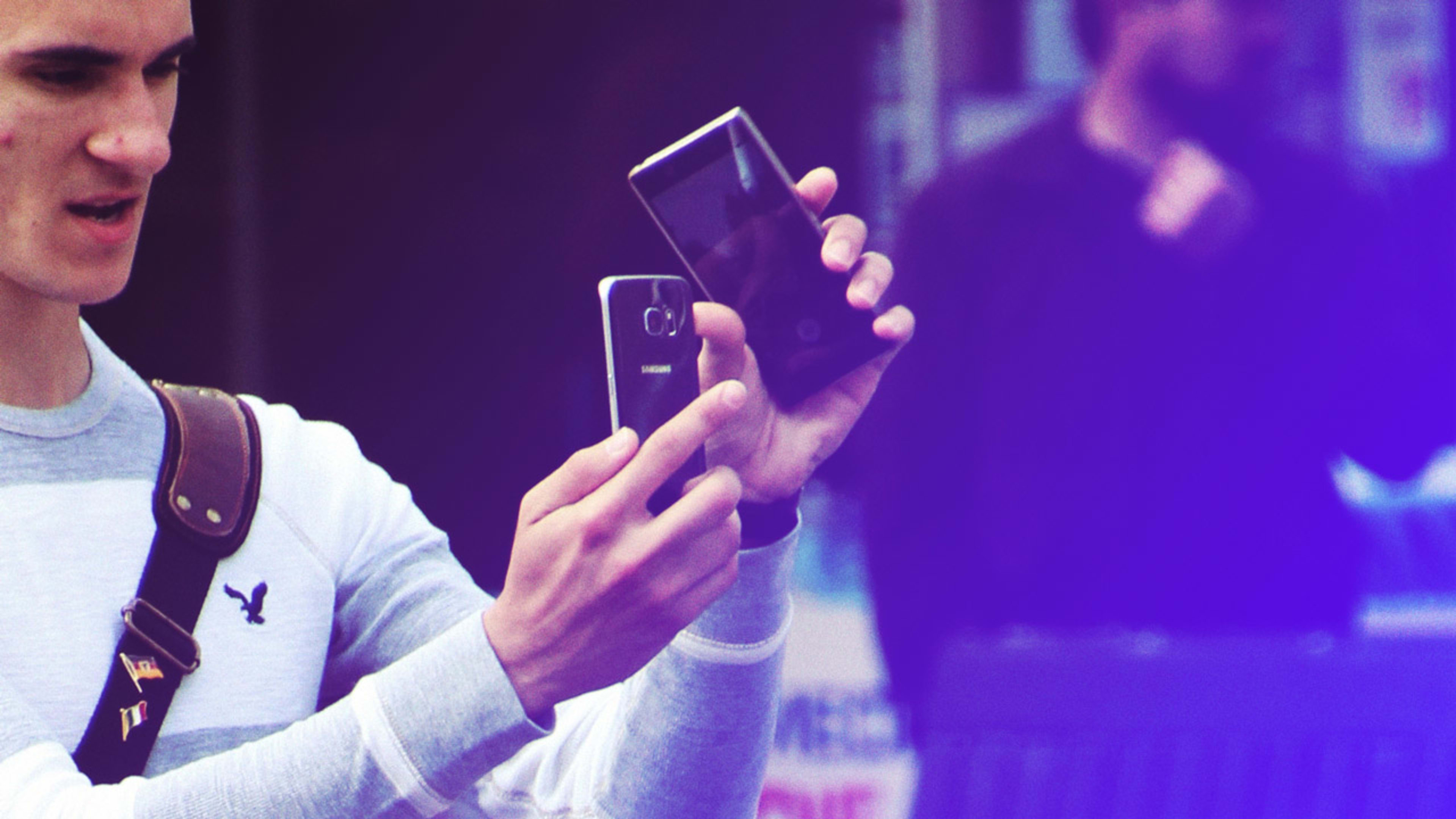In a 2011 study at Stanford University, researchers asked a group of girls ages 8 to 12 by to surf the internet for up to five hours, then share how happy and socially comfortable they felt. The results weren’t encouraging. The more time the girls spent online, the less content and at ease in social settings they became, compared to peers whose screen time was more limited. Two years later, a separate study found that the mere presence of a cell phone during a face-to-face conversation reduces feelings of closeness, trust, and relationship quality—even if the phone isn’t being used.
The fear that our reliance on technology is preventing us from connecting face-to-face in real time is nothing new. And while the data pointing in that direction should give us pause, there’s another story as well, about how technology itself can help us roll back some of the problems it’s created. Geographically divided families who communicate on Skype, and deployed soldiers who read bedtime stories to their kids over FaceTime, know this already.
But it’s worth pointing out that these aren’t shabby substitutes for other forms of communication, they’re new ones altogether. And they may hold the key for everybody to start using their gadgets in more human ways.
The Social Upsides To Screen Time
One of the most widely quoted studies on communication and technology has since been replicated and updated to reveal fascinating new insights. The original 1998 research, conducted by Carnegie Mellon’s Robert E. Kraut, tracked the internet use of families with high school students. Kraut found that as internet use went up, so did the teenagers’ incidence of depression. Social support and other measures of psychological well-being went down.
But in 2002, Kraut repeated the same experiment, this time paying careful attention to whether students were interacting with people with whom they had strong ties (close friends, family, etc.) or weak ties (strangers, acquaintances). By parsing how time was spent online—and with whom—Kraut found something surprising: The students who interacted primarily with strong ties showed a decrease in depression, a reduction in loneliness, and an increase in the level of perceived social support.
Another study of more than 600 Internet users found that half had turned online connections into physical interactions, and 22% of those later became serious relationships (engaged, married, or living together). And a two-year follow-up study confirmed that those partnerships were just as stable as relationships initiated the old-fashioned way.
It’s Not An Either/Or
Keith Hampton, a communications expert at Rutgers University, argues that the idea that we interact either online or offline is a false dichotomy. On balance, he’s convinced that social media and the internet are actually drawing us closer together—both online and offline. “I don’t think it’s people moving online, I think it’s people adding the digital mode of communication to already existing relationships,” Hampton in 2015.
Hampton’s research suggests that the more different kinds of media that people use in order to interact—phone, email, in-person, text, Facebook—the stronger their relationships tend to be. Similarly, in a 2012 Pew study of more than 2,200 Americans, 55% of internet users said their email exchanges had improved their connections to family members, and 66% say the same thing when it came to their good friends.
When Peter Steppe created OEX Circle in 2015, an app designed to trigger greater human connection using phones, he was convinced technology was getting in the way of human interaction. The app encouraged everyone in a group to put their phones down on the table; and the longer the phones stayed there, the stronger the “flame” grew and the more points users earned. But before long he realized this approach wasn’t solving the bigger issue. OEX Circle helped people to not fiddle with their phones, but it didn’t necessarily encourage them to connect better overall.
Steppe concluded that perhaps a better challenge than finding ways to wean people off their gadgets would be to use them to connect in ways they otherwise wouldn’t. So over the past year, he and his team rebuilt and rebranded the app under the name “Campfire,” so it would feel “a bit like going outdoors, yet at the urban table,” he explains. Campfire is designed to spur “in the moment,” 30-minute daily doses of interaction with friends and family—all by phone. That theory will be tested when the app launches in the iTunes store later this month.
In line with the research, Steppe now believes that strong ties lead to the most sustained feelings of happiness. But he’s also more optimistic about weak ties, since he sees them as seeds of new friendships. Here’s to hoping they are.
This article is adapted from The Future of Happiness: 5 Modern Strategies to Wire Your World for Greater Productivity and Wellbeing by Amy Blankson. It is reprinted with permission.
Recognize your company's culture of innovation by applying to this year's Best Workplaces for Innovators Awards before the extended deadline, April 12.
